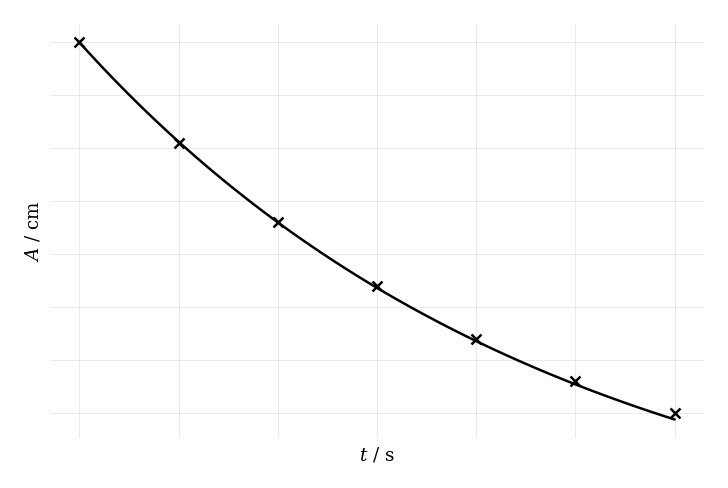Practice C.1 Simple harmonic motion with authentic IB Physics exam questions for both SL and HL students. This question bank mirrors Paper 1A, 1B, 2 structure, covering key topics like mechanics, thermodynamics, and waves. Get instant solutions, detailed explanations, and build exam confidence with questions in the style of IB examiners.
The graph shows the displacement-time representation of two transverse waves (solid and dashed) travelling through the same medium. Both waves have the same amplitude and frequency.

State the amplitude of either wave.
Determine the period of the waves.
Determine the phase difference between the two waves.
Outline one difference between the two waves other than phase.
Explain how the principle of superposition is used to determine the resultant displacement of these waves at any time .
The graph shows the transverse displacement in millimetres of points on a stretched string as a function of distance in metres along the string at a fixed instant in time.

State the amplitude of the wave.
State the wavelength of the wave.
The wave has a frequency of . Calculate the speed of the wave.
Identify whether this is a transverse or longitudinal wave. Justify your answer.
A student investigates a mass-spring system undergoing vertical simple harmonic motion. The system has a spring constant and supports a mass of . The system oscillates with an amplitude of .
Calculate the natural frequency of the oscillation.
Calculate the total mechanical energy of the system.
Determine the displacement of the mass when the speed is .
Explain how damping would affect the amplitude and energy of this system over time.
A body moves in simple harmonic motion (SHM). At time , the displacement is zero and the body is moving in the positive direction.
Which graph correctly shows the variation of the body's kinetic energy with time?
A mass is attached to a spring and performs simple harmonic motion with an amplitude of and a maximum speed of .
State the relationship between maximum speed, amplitude, and angular frequency.
Calculate the angular frequency of the motion.
Determine the period of the oscillation.
A mass on a spring oscillates with frequency . What is the period of oscillation?
What is the phase difference between velocity and acceleration in simple harmonic motion?
A student investigates the damping of a pendulum's amplitude over time . The amplitude is measured at regular time intervals as the pendulum oscillates in air. The following data were recorded:
| Time / s | Amplitude / cm |
|---|---|
| 0 | 10.0 |
| 5 | 8.1 |
| 10 | 6.6 |
| 15 | 5.4 |
| 20 | 4.4 |
| 25 | 3.6 |
| 30 | 3.0 |
The amplitude of a damped oscillation follows the equation:
where:
- is the initial amplitude ,
- is the damping coefficient,
- is the mass of the pendulum bob,
- is the time,
- is the base of the natural logarithm.

Describe the trend in the graph and explain how it relates to the equation .
Identify two potential sources of error in the experiment and explain their impact on the measured amplitude.
Suggest two improvements to minimize these errors.
Suggest how to linearize the data to determine the damping coefficient .
Using the data point , calculate the value of . Show all your working.
If the uncertainty in is and the uncertainty in is , calculate the percentage uncertainty in for the same data point.
A particle undergoes simple harmonic motion. Which quantities of the motion can be simultaneously zero?
A particle moves according to the equation , where displacement is in metres and time is in seconds.
Determine the displacement and velocity of the particle at .
Calculate the maximum speed of the particle.
Determine the total energy of the system if the mass of the particle is .
Calculate the potential energy of the particle at .
Explain the meaning of negative velocity in this context.